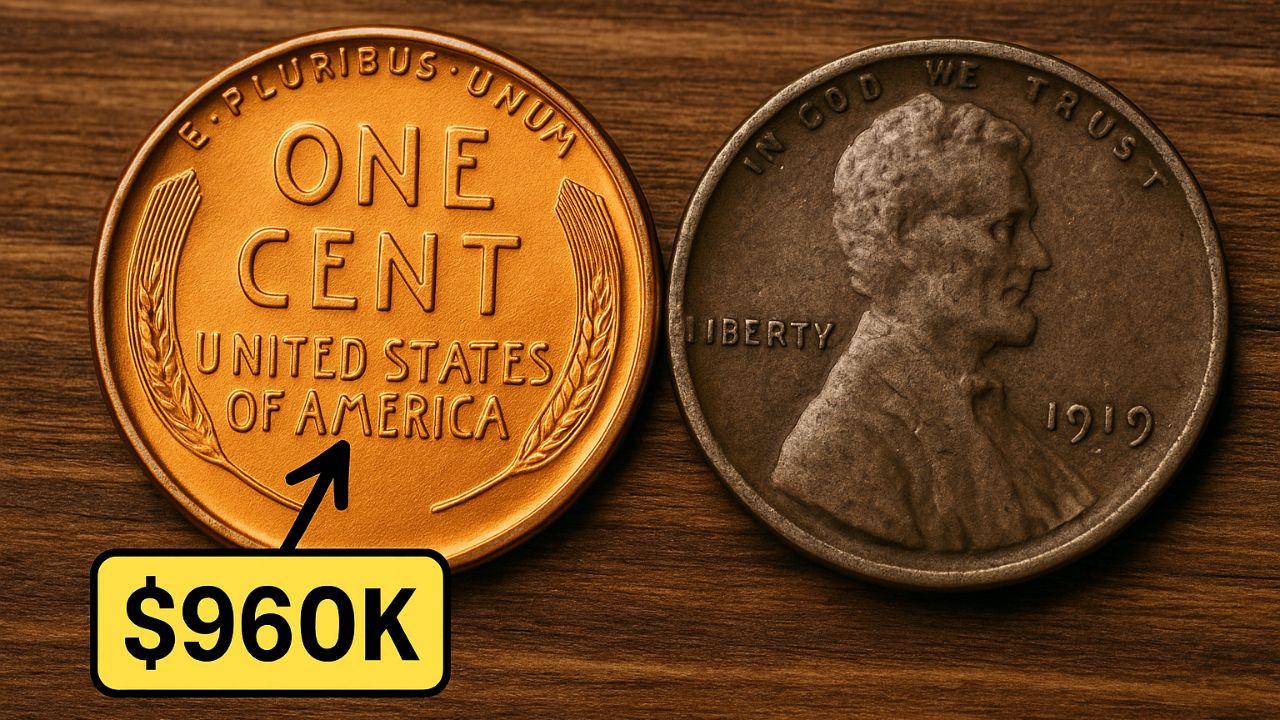Let’s get one thing out of the way: most pennies are just… pennies. They clink around in glove compartments, disappear under couch cushions, and collect dust in old mason jars. We ignore them. We roll our eyes when someone pays with exact change. But what if I told you one of those forgotten little copper coins could be worth almost a million bucks?
Not exaggerating. One rare Lincoln Wheat Penny reportedly sold for $960,000. And yes, some of these rare coins might still be floating around in circulation. You could literally have one sitting in a junk drawer right now.
Why the Lincoln Wheat Penny Is a Big Deal
The U.S. Mint dropped the Lincoln Wheat Penny to celebrate Honest Abe’s 100th birthday. It was a game-changer—it marked the first time an actual person (as opposed to Lady Liberty or abstract symbols) appeared on American currency.
On the front? Lincoln, looking noble.
On the back? Two wheat stalks, arching up like little symbols of prosperity and good ol’ American grit.
This design stuck around until 1958. Then they swapped the wheat for the Lincoln Memorial (less charming, if we’re being honest). But here’s the kicker: not all of these pennies are created equal.
Some were minted with mistakes. Others with rare metals. A few were struck in extremely low quantities. And those are the ones collectors lose sleep over.
The $960,000 Penny: What Makes It So Special?
The record-breaking Lincoln Wheat Penny most experts point to is a 1943 copper penny. Sounds ordinary, right?
Except it’s not. In 1943, pennies were supposed to be made from steel because copper was being saved for World War II equipment. But somehow, a few copper blanks got through the system and were pressed with that year’s design.
Boom. Accidental rarity.
And that accident? It made those few copper 1943 pennies some of the most valuable coins in U.S. history.
So, if you find a 1943 penny and it sticks to a magnet? Steel. Common.
But if it doesn’t? You might be holding a six-figure surprise.
So How Do You Spot a Valuable Wheat Penny?
Here’s a quick cheat sheet for what to look for if you’re pawing through old change:
| Feature | Why It Matters |
|---|---|
| Date | 1909–1958 only. Bonus points for 1909-S VDB or 1943. |
| Material | Steel (common in 1943) vs. Copper (rare in 1943). |
| Mint Mark | “D” (Denver), “S” (San Francisco), or no mark (Philly). |
| Condition | Crisp, sharp details = big bucks. |
| Errors | Doubled dies, off-center strikes, unusual lettering. |
Keep an eye out for anything weird—colors, weight, alignment. These “errors” can turn a penny into a payday.
Everyday People Have Found These. No, Really.
There are legit stories of people finding ultra-rare coins in pocket change, yard sales, piggy banks, and even as tips in restaurants. One teen found a 1943 bronze penny in his lunch money and ended up selling it for $40,000. That’s better than mowing lawns all summer.
The $960,000 penny? It was found decades after it was minted—just lying around, forgotten.
Makes you think twice before chucking spare change into a jar, huh?
Coin Collecting: Where Hobby Meets Hustle
For some, coin collecting is just a quirky hobby. For others, it’s a full-blown obsession. Collectors dive deep into minting history, patterns, and cataloging techniques. They haunt estate sales, hit up auctions, and comb through eBay listings like treasure hunters.
The Lincoln Wheat Penny is a gateway coin. It’s old enough to feel special, but not so old that it’s impossible to find. And it links history with value in a way few other coins do.
Even if you don’t care much about numismatics (that’s the fancy term for coin collecting), it’s hard not to be intrigued by the idea that something as boring as a penny could be worth a house in the suburbs.
Final Thoughts: Keep Your Eyes Peeled
It’s easy to overlook pennies. They’re tiny, dirty, and often more hassle than they’re worth. But every once in a while, one turns out to be a literal hidden gem.
So next time you’re counting change or digging through an old coin jar, slow down. Check the dates. Flip the coins over. Use a magnet. Who knows—you might stumble on a slice of history worth six figures or more.
Worst-case scenario? You waste a few minutes.
Best case? You strike copper-gold.
FAQs
What years are Lincoln Wheat Pennies?
1909 to 1958. After that, they switched to the Lincoln Memorial design.
Which Wheat Penny is worth the most?
The 1943 copper penny. One sold for $960,000. But 1909-S VDB is also extremely valuable.
Are valuable Wheat Pennies still out there?
Yep. Rare ones are still hiding in old jars, collections, or even circulation.
What should I do if I find one?
Don’t clean it! Get it checked by a certified coin dealer or grading service like PCGS or NGC.
How do I know if it’s real copper or steel?
Use a magnet. If it sticks, it’s steel (common). If it doesn’t, you might have something rare.



